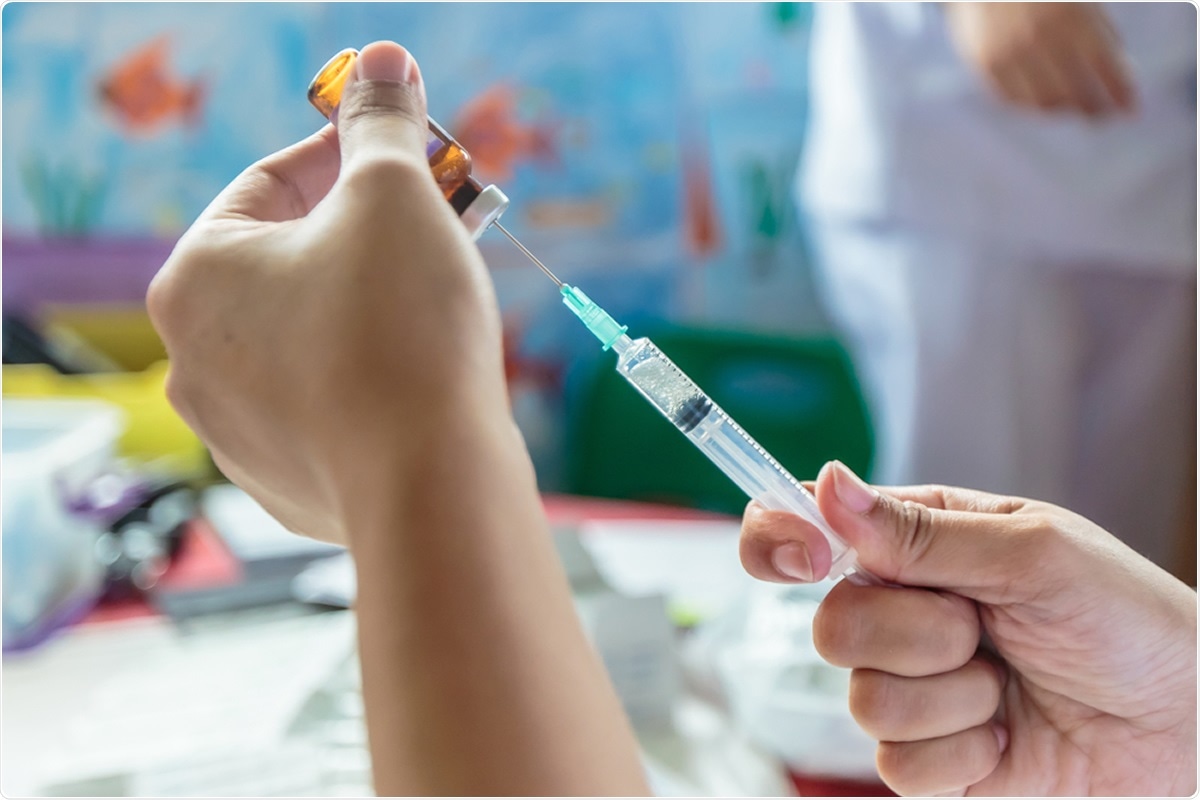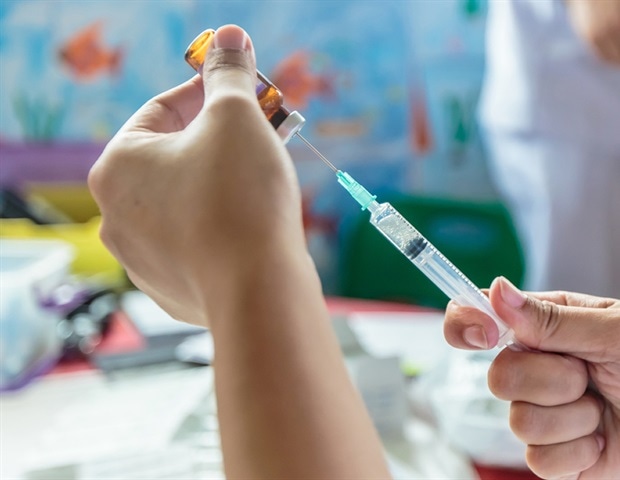The COVID-19 pandemic has come under control in many Asian countries where it flared up early in its course. Among these is Japan, where the first case was reported on January 15, 2020, leading to a rapid increase in the number of infections. A new study explores whether and how the practice of routine BCG vaccination of infants may have curbed the initial spread of severe acute respiratory syndrome coronavirus 2 (SARS-CoV-2) infection in Japan. The research is published in the Journal of Infection.

The History of COVID-19 in Japan So Far
The island country went into a state of emergency in seven of its prefectures on April 7, which was extended just over a week later, on April 16, to the whole country. This was lifted on May 25, 2020, by which time there were well over 16,600 cases. The current study retrieved data on the prevalence of the infection and BCG vaccine coverage in terms of the number of vaccinations per live births.
The researchers found, from their analysis of the data, that the COVID-19 prevalence varied among the 47 prefectures, from zero in five prefectures on March 29 to as many as 298 per million in Tokyo, on May 1. The death rate was highest in three prefectures, at 9 per million in Fukui prefecture to above 5 per million in Ishikawa. High case fatality rates were observed in Gunma, Aichi, and Ehime prefectures, ranging from over 10% to over 6% of confirmed cases (by positive polymerase chain reaction testing).
The Vaccine
The BCG (Bacillus Calmette-Guérin) is the lynchpin of tuberculosis control programs in most of South Asia. This attenuated mycobacterial vaccine was introduced in 1924, and most data on the effect of BCG on tuberculosis incidence and vaccine-related adverse effects have come from younger people, mostly students, and nurses.
From 1946 onwards, group BCG vaccination began to be given to teenagers and young adults. In 1949 the liquid formulation was replaced by a more reliable freeze-dried form. It was given to all individuals below the age of 30 and repeated annually until a positive skin test was obtained by tuberculin skin testing (TST).
The method of administration was altered to multiple skin punctures in 1967 to avoid the adverse effects due to intradermal administration. In 1974, the policy was altered to ensure that infants below the age of 4 years received the vaccine on a routine basis, followed by two more doses in the first year of elementary school, and in the first or second year of junior high school following a TST.
The government declared “a state of emergency concerning tuberculosis” in 1999 due to the failure of slower methods to prevent the flare-up of new cases. By 2003, revaccination was no longer in force, since it lacked proof of effectiveness. Two years later, the policy was to immunize infants below 6 months of age and then below the age of one year in 2013.
This vaccine was given at low rates and with extremely variable coverage between 1999 and 2002. In eight prefectures, fewer than 50% of infants received the vaccine and less than a third in Tokyo and Kanagawa. However, with the national policy on better prevention of tuberculosis in 2004, as well as bringing about a change in the targeted age group, the national coverage increased to 1.18. In Iwate prefecture, it rose to 1.47.
From 2006 onwards, vaccine coverage went up to over 50% in every prefecture except for Miyagi, with 42%, moving steadily upwards until it has crossed 90% in all prefectures since 2013. In turn, this led to a steep drop in the incidence of tuberculosis, from 698 in 1951 to below 18 per 100,000 in 2011.
The Mechanism of BCG Vaccination
The immunity induced by the BCG vaccine is trained immunity, where adaptive and innate immune responses come into play to improve host defenses against non-specific pathogens. Newborns who have received this vaccine within 10 days of birth show an elevated IL-6 level at baseline. Still, when stimulated by exposure to a pathogen, the production of interleukins and other chemokines actually drops.
This could be the reason for the reduced spread of SARS-CoV-2 in this population with high BCG coverage, as well as for the decreased infection and mortality rates among the younger age groups in Japan. This efficacy possibly contributed to the protection against SARS-CoV-2 spread, infection, and mortality in communities with high BCG vaccine coverage among younger people.
BCG Correlated with COVID-19 Prevalence and Mortality
Going back to the figures in the period 1999-2002, in 2004, and in 2012, the researchers found that the prevalence of COVID-19 was inversely correlated to BCG vaccine coverage in ten prefectures. The higher the infection rate, the lower was the vaccine coverage in 2004 terms.
The vaccine target age group was actually below the age of 4 before 2005. Therefore in the first year of coverage included in the study, the vaccine covered population was born between 1995 and 1999. The prevalence of confirmed and symptomatic patients was negatively correlated with the percentage of children vaccinated in 2004, the ratio of people above 65 years of age, and when people were employed in the tertiary sector of industry. COVID-19-related deaths were also inversely correlated with this parameter.
However, the number of cases, PCR-positives, and deaths were positively associated with the number of days from the diagnosis of the first patient until March 29, 2020. A more detailed analysis of the age-stratified population showed that the prevalence of the infection was higher among the age groups 20–34 and 40–54 years. These generations may actually be among those who were poorly covered by vaccination, in the years leading up to 2005.
Implications and Inferences
The researchers say, “This is the first study to demonstrate an impact of routine infant BCG vaccine coverage among younger people, especially those born between 1995 and 2004, on local COVID-19 spread in Japan.” The explanation for this association is that BCG reduces the number of asymptomatic transmissions, where infections that result in no or only mild symptoms spread the infection substantially.
These findings suggest that BCG vaccination does play an influential role in protecting against the spread of infection on a mass scale. The sparing of people above the age of 65 years may mean that in Japan, this age group is not more susceptible to the infection. However, they did observe a high case fatality rate in those above 70 years, possibly because this virus often causes a hyper-inflammatory systemic syndrome characterized by a cytokine storm. This can result in acute respiratory distress syndrome (ARDS). Such unregulated cytokine secretion is more common in older people and especially in men.
Older people may suffer a higher mortality rate because they did not receive quality BCG vaccination and may not have benefited from the liquid formulation they were administered before 1949. Moreover, a positive TST precluded vaccination at that point.
Other studies have shown that universal BCG vaccination with a high coverage rate among young people under 25 years protects against COVID-19. Two studies have contradicted these findings, in Israel and Germany, respectively. However, in both these countries, universal immunization was stopped in 1982 and 1990, respectively, and asymptomatic spread has not been quantified, which makes it difficult to compare these studies directly with the current one.
Several studies have compared the incidence and severity of COVID-19 among countries with different BCG vaccination policies and found a protective effect of universal BCG vaccination, especially during the past 15 years, and high vaccination coverage in young people under 25 years of age.20
The authors sum up: “The current study demonstrated that routine infant BCG vaccine coverage in young people showed a protective effect against local COVID-19 spread in Japan. The possible relevance of infant BCG vaccination to high mortality among elderly patients with COVID-19 should be elucidated.’
Currently, an uptick in the number of infections of the novel coronavirus in Tokyo is causing confusion and concern among health officials charged with bringing the outbreak under control.
